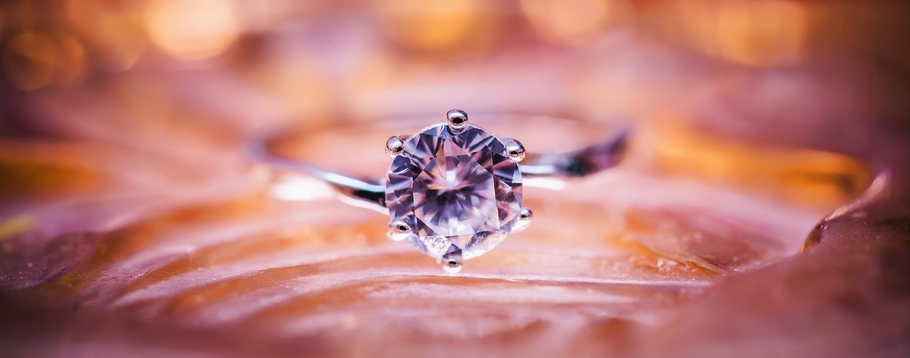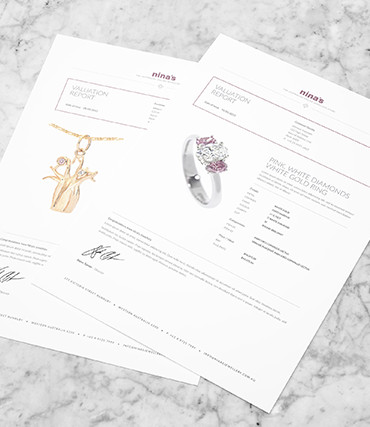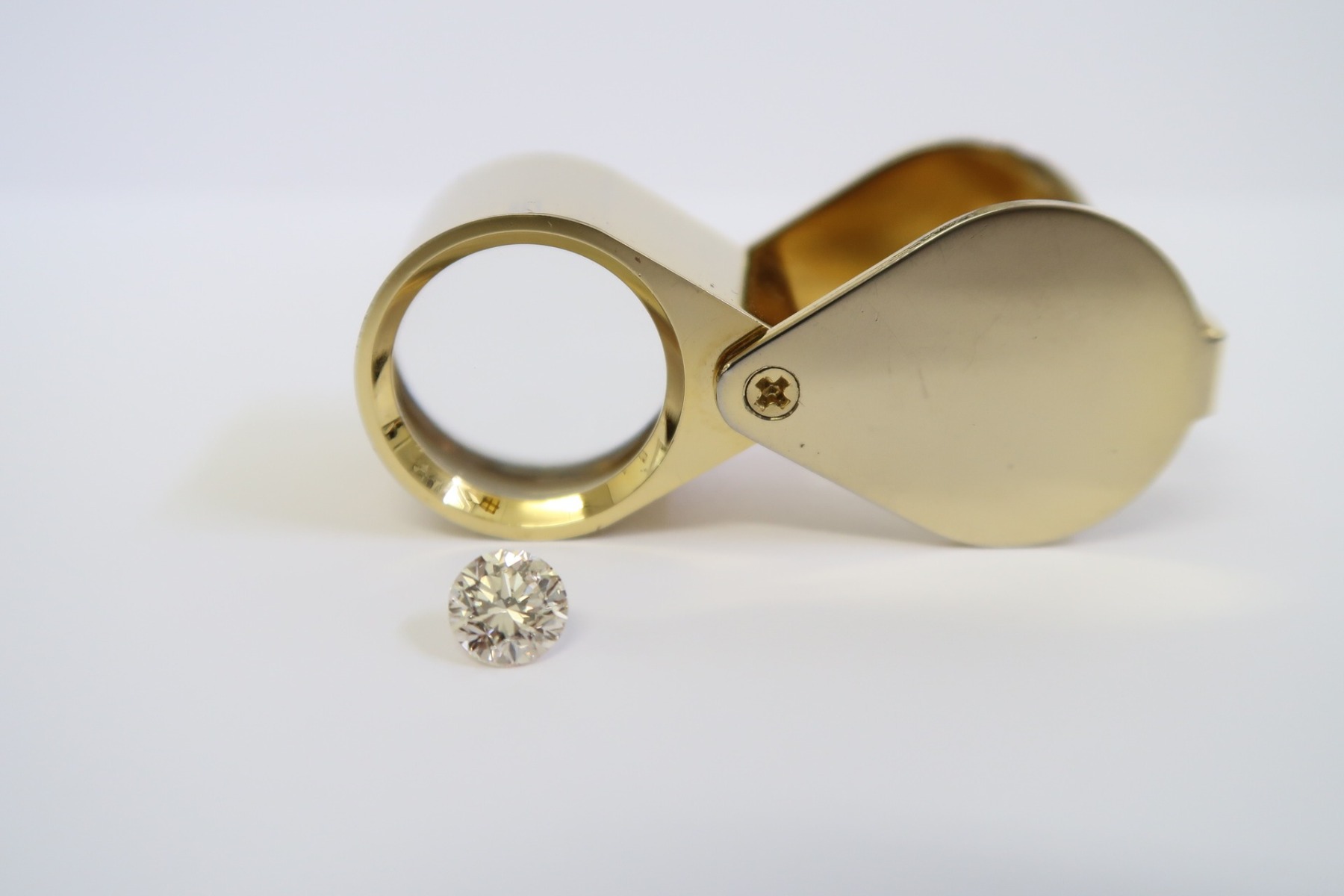Is your diamond real or fake? How to tell If a diamond is real!


Wondering how to tell if a diamond is real? Need to make sure you don’t accidentally buy a fake diamond, or are trying to determine the value of some inherited or hand-me-down piece?
With the rising popularity of gemstones like cubic zirconia and other stones that may be passed off as diamonds, it’s helpful to have a useful and practical guide to help you find out if your diamond jewellery is real.
However, use caution. There is no way to conclusively determine whether or not a diamond is real or fake unless you’re a qualified expert. At-home tests are useful, but the only way to really be sure is to consult a qualified expert. That’s where Nina’s Jewellery’s GIA certified Diamond and Design Specialists come in.
We want our customers to be able to shop with confidence – and we are always happy to help educate our customers, and provide an objective, independent, and expert opinion on the value of their diamonds.
The basics of spotting stones that aren’t real diamonds
Want to make sure you know the difference between real and fake diamonds? Here’s a quick overview you can use to spot stones that are not diamonds, but may appear similar at first glance.
- Synthetic diamonds – Synthetic, lab-grown diamonds cannot be differentiated from true natural diamonds without expert testing. If you suspect you have a lab-grown diamond on your hands, contact a professional for an assessment.
- Cubic zirconia – You know why cheap jewellery is often called “flashy?” Because of cubic zirconia! This gem looks a lot like a diamond, but it flashes a lot in the light. It does not have a subdued lustre or inner fire, and throws around more rainbows when it sparkles.
- White sapphire – White sapphires may look like diamonds, but they lack the high light-and-dark contrast of diamonds. If your stone’s colour looks blurred between the bright and dark areas, it may be a white sapphire.
- Moissanite – Moissanite is a type of silicon carbide. It’s very rare naturally, but can be synthesised in a lab, like synthetic diamonds. It’s not quite as hard as a diamond, at 9.25 on the Mohs scale, and it has a higher refractive index. Moissanite also tends to project a yellow or greyish hue in certain lights.
- White topaz – The best way to see if you have a white topaz is to look at it under magnification. It is only an 8 on the Mohs hardness scale, so most white topaz stones that have been worn for any length of time will have quite a few scratches. Diamonds, on the other hand, will not scratch easily.
How to tell if a diamond is real with simple, DIY, at-home tests
So, you think you’ve got a fake diamond on your hands. What can you do at home to check if it’s real or not? There are a few different ways you can tell if a diamond is real or fake. Read on and try some of these tests to see if your diamond is real or fake. And if you have any doubts, come to see us for a consultation.
- Check mount & settings – One method you can use is to check the mount and setting to see if it’s made with precious metals like 18k gold, platinum, and other such materials. Typically, only high-quality diamonds will use these settings – lower-quality jewellery will be made with lower-grade settings and mounts. In addition, if you see “C.Z” anywhere on the jewellery, this means you’re dealing with cubic zirconia, not a diamond.
- The water test – Diamonds are very dense. If you drop one in a glass of water, it will quickly sink to the bottom. Jewellery that floats or sinks slowly may be fake.
- The fog test – Diamonds dissipate heat very well. Breathe onto the diamond, and it should clear up within a few seconds if it’s real. If it takes more than 3-4 seconds, it’s probably a fake.
- The transparency test – Place the diamond on a piece of newsprint. If you can clearly read the words or letters underneath, it’s a fake. If the letters are blurry, it’s likely real.
- The scratch test is not always reliable – The “scratch test” involves scraping your diamond on a mirror or piece of glass to check its hardness. This is not a good way to see if a diamond is real, because some materials like cubic zirconia and moissanite are nearly as hard, and can also scratch glass. In addition, the scratch test could damage your diamond.
How to tell if a diamond is real with specialised appliances
There are a few other tests you can do if you have the right appliances on hand, such as:
- Diamond scale – If you own a diamond scale or go to a jeweller, they can weigh your diamond, and determine if it is the right density to be a real diamond, or if it’s a fake – cubic zirconia, for example, is about 55% more dense than a diamond.

- Black light – When you put some diamonds under a black light, they will glow blue. Other types of stones will not. However, only about 1/3 of diamonds will fluoresce under a black light, so this is not the best test.
- Heat/fire test – If you’re serious about checking if your diamond is real or not, you can heat it with a blow torch or a lighter for about 30 seconds, then drop it into a glass of cold water. A diamond will be unharmed by this, but fake stones will likely shatter because they can’t handle the temperature change. PLEASE NOTE: Nina’s do not recommend you try this one at home!
How experts tell if a diamond is real or fake
If you’re still not sure about whether or not your diamond is real, an expert can help with tests like:
- Diamond inspection with a loupe – This simply involves looking at the stone under high magnification. An experienced jeweller will easily be able to look at the structure of the stone and determine whether or not it’s real.
- Thermal conductivity probe – Also known as a “Diamond Tester” this probe measures how quickly a stone disperses heat, and can help determine whether or not a diamond is real.
- High profile weighing – Weighing a diamond with a specialised scale will help determine its density, and whether or not it’s a fake.
 Got questions? Need a value assessment? Come to Nina’s Jewellery.
Got questions? Need a value assessment? Come to Nina’s Jewellery.
Our team of experts is always here to help you determine whether or not your diamonds are real, and to give you an estimate of their quality and value. If you’ve struck out with DIY tests or just would like the experts to handle the job, contact us for a consultation right away.





The information below is required for social login
Sign In
Create New Account